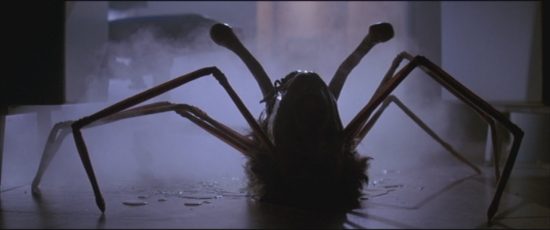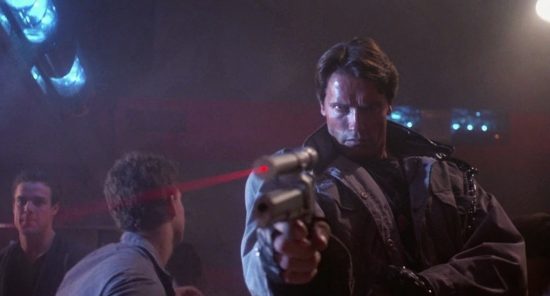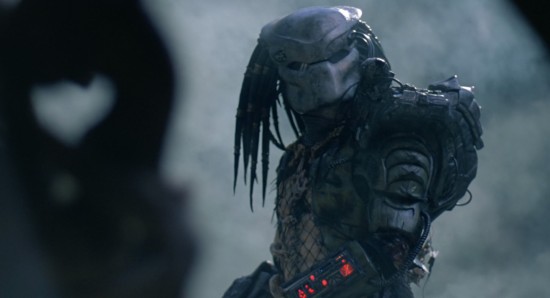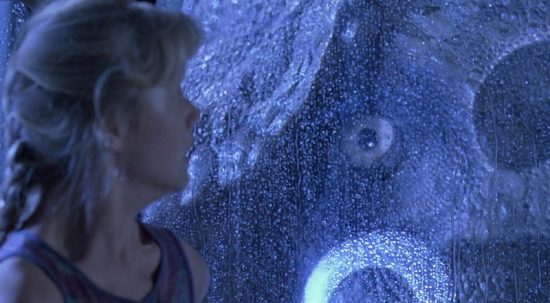A Cinema full of Monsters – Part 2
You can read Part 1 here.
Peak and decline
For me, the greatest decade of monsters is the Eighties. This is an opinion piece, and I’m happy to debate it in the comments.
Where the threat is giant-sized, often characters, and sometimes story, become secondary. Like any evolution, those wonderful early films influenced the monster effect geniuses of the Eighties. Stan Winston, Rob Bottin, Rick Baker, these were the natural heirs of Ray Harryhausen. They had access to contemporary technology. A more permissive society would allow them to take monster effects in visceral and convincing directions.
An army of monsters plagued the Eighties, and they endure, for better or worse, to this day. 1980 had Alligator, written by John Sayles, and starring Robert Forster who we sadly lost last year, and who’s final role was in The Wolf of Snow Hollow (2020) which deserves more attention and may well gain cult status.
In 1981, things accelerated. An American Werewolf in London is still the greatest werewolf movie ever put on the screen and while we’ve had excellent contenders in the last couple of decades, like Ginger Snaps (2000) and Dog Soldiers (2002), the crown stays steady on its furry head. The Howling, released in the same year, also written by Sayles, and with similarly stellar effects was eclipsed. Rick Baker won an Oscar for the American Werewolf effects. The film spent so long in pre-production, he had started working on The Howling before John Landis asked him back, and a younger crewmember named Rob Bottin took over. The two would push each other to ever greater achievements over the rest of the decade.
1981 was also the final year we’d witness the legendary Ray Harryhausen’s effects work, in Clash of the Titans, and what a film to bow out on. The Medusa alone is worth the price of admission, but the wizard excelled himself… no one went to see Laurence Olivier (let alone the dude from LA Law), it was all about the monsters.
1982, as discussed ad-nauseam including by me, was geek nirvana. Rob Bottin’s gruesome work on John Carpenter’s The Thing is unforgettable and likely unsurpassable… while I didn’t hate the 2011 version the way most people (understandably) did, the gulf of quality between the effects was huge and obvious. Progress isn’t always a good thing. No wonder so many filmmakers and filmgoers crave practical effects. The effects were only part of the success. There is no obvious, easy to see threat stomping around the place smashing everything up. As in American Werewolf, the insidious monster is inside people, inside friends. The brilliant, paranoid ending is perfect. A singularity between the quality of the writing and the effects in both films deliver a pair of compelling, character-driven stories.
The Thing is also an example of so-called ‘body horror’, the biggest proponent of which, David Cronenburg, would go on to make the 1986 version of The Fly, with similar themes and staggeringly visceral effects. Once again, the monster is up close, a likeable person, with a strongly written character. The end of the film is both heartbreaking and stomach-churning.
One Eighties movie, which you might not think of as a monster movie, is, in fact, the apotheosis, of everything I’ve talked about. In many ways, a perfect confluence of so many cultural milestones: the peak of the VHS era; Arnold Schwarzenegger’s most iconic role; it used time travel, but only to save money… the filmmakers didn’t have the budget to fully realise the future vision, so instead it was set in the modern-day; elements of cyberpunk abound in the ‘tech noir’ aesthetic; we’ll see, the film was made by the most successful director of all time, but shot guerrilla-style even breaking the law to keep the costs down; it was SF but also horror. More than anything though it was a monster movie.
The plot of The Terminator is the same as The Golem, where we started; humanity creates something supposed to protect them (Skynet) which turns against its masters, even becoming obsessed with one in particular (John Connor). Just like the golem, the terminator is relentless: “Listen, and understand. That terminator is out there. It can’t be bargained with. It can’t be reasoned with. It doesn’t feel pity, or remorse, or fear. And it absolutely will not stop, ever, until you are dead.”
Arnie is six foot, two inches tall, his chest measures fifty-seven-inches and at his heaviest, he weighed two-hundred and fifty pounds (one-hundred and thirteen kilograms or nearly eighteen stone). Big enough?
Strange too, the endoskeleton literally and famously conceived in a nightmare. As for being a portent… judgement day is coming and the only person who can stop the total eradication and enslavement of humanity is Sarah’s unborn child. Yep, portentous, no?
Moreover, the first Terminator movie is harsh. The robot brutally murders innocent women, and the camera lingers on the violence. Seventeen police officers are machine-gunned to death. The effects may not meet current standards, but the sight of the terminator cutting out his eye induced squirms at the time. So, “distress, torment,” and,” misery”, mean the film strikes every definition of ‘monster’ as hard as a hydraulic press. Also squarely in horror territory, the film occupies a Venn diagram between the giant monster movies of the Fifties (terror of the nuclear age, an unstoppable beast on the rampage) and the horror monsters of the Universal era and King’s archetypes (most obviously, Frankenstein’s monster, but with shades of both the Wolf Man and Dracula).
The other memorable monster of the Eighties was from another Arnie vehicle, Predator (1987). Stan Winston took charge of effects on both movies, and both films, like Alien before them, have spawned franchises of vastly varying quality.
Maybe I’m wearing nostalgia goggles, but what original monsters have we had since? If Dracula, Frankenstein’s monster and the Wolfman are the ‘Trinity’ of Universal horror monsters, then the Alien, Terminator and Predator are their descendants, and no-one has produced anything better since. So, are monster films waning?
We’ve created a monster…
I said earlier James Cameron is the most successful film director ever. Regardless of what you think of him and his movies, he’s the only director to have made two of the top ten highest-grossing films of all time (Avatar and Titanic are in the top three, whether you adjust for inflation or not. Many of the competing films, particularly in the unadjusted list, are sequels or franchise entries, unlike both the Cameron films which were originals).
Another pattern exists with his films. He is now making four Avatar sequels, and murmurings are writing him off or saying he’s heading for a fall. Well, folks, they say so before all his films. Terminator 2: Judgement Day (1991) had a budget of over $100 million. The UK media were all over this, believing it could never make such a crazy amount of money back in revenue. The film had almost done so even before release. The same muttering occurred before Titanic (1997) (which cost more than a million dollars per minute of screen time) and Avatar (2009). The man habitually makes the most expensive films ever, and people often assume they will flop. So far, he keeps proving them wrong, and long may that continue. He also always pushes film in a new direction. The Abyss (1989), though flawed, was a spectacular and hugely moving film, as well as a proof of concept for the ground-breaking morphing CGI effects he used on T2.
His two sequels to date (let’s leave Piranha II out of this, he only filmed five days’ worth of footage, despite having the dubious credit as the film’s director), have moved the focus on movie monsters. Aliens (1986), while feeling very much part of the same universe and an organic continuation of the story, is a completely different kind of film. Alien (1979) is a haunted house/monster movie. Aliens is a war film with monsters. Aliens is kinetic, dynamic, explosive. In comparison, Alien is staid. Aliens has humour. Alien takes itself very seriously throughout. The first film is like an art-house ghost movie in space. Aliens, just as the marketing said, was a war, and with the Alien Queen, it was also closer to a traditional Fifties monster movie than the first one, albeit both films sit comfortably in the horror genre.
Cameron only got a shot at making Aliens because of the success of The Terminator. With Terminator 2, he’d once again complete the rare feat of creating a sequel genuinely as good – or better – than the first film. Where Aliens and The Terminator were both rated 18 on release in the UK and were both monster movies with clear horror elements, T2: Judgement Day was a different proposition altogether. The effects and set-pieces were bigger and more important than the ‘monster’. Terminator 2 is an action movie, not a monster movie.
In 1991, the film owned cinemas. I went five times myself, as did most of my friends, and I still went back for the 3D re-release a few years ago. T2 is another link in a chain going back to King Kong, with effects again a big reason to go to the cinema. But the film pulled away from the monster movie template its predecessor followed. True, it’s virtually a remake of the first film: two opposing warriors travel back through time because of John Connor; the hero is hopelessly outgunned by the antagonist; the climax involves the heroes being chased down by the bad guy in a truck followed by a fight in a factory. But there is a conscious decision to introduce a younger protagonist, to veer further from horror and into jaw-dropping action. Every penny of the huge budget (fifteen times the cost of The Terminator) is on the screen, a blistering chain of action set pieces, each bigger than the one before. If Jaws was the first event movie, sixteen years later T2 was when the available technology caught up with the filmmaker’s ambition. In a film all about a terrifying future where technology is the enemy, Cameron showed us the future by embracing technology. The first film’s murderous monster was now the hero.
Jurassic Park (1993) was the inevitable next step. Thematically, it’s remarkably like Terminator 2: mankind uses technology to create something deadly and uncontrollable; a central character arc is about parenthood. They both have tremendous heart, too.
Jurassic Park gazes back in cinematic history while using new technology to create the best giant monster movie yet. Yes, the best. Because what followed? The franchise got steadily worse. Jurassic World (2015) wasn’t all bad (check out this idea of the movie as a critique on present-day blockbusters in this video by Battleship Pretension), but it’s no match for Spielberg’s classic, and the follow-up was dire. Both the 1976 and 2005 King Kong remakes were guff. In the first effort, the ape bites people’s heads off. Really? Peter Jackson’s remake, while heartfelt, is both overlong and overblown, a classic case of a filmmaker having too much power over the studio and no-one being able to edit the film down (yes, I know I can hardly talk about editing). Some found the ice-skating scene magical… others not so much. At least Kong: Skull Island (2017) had some fun with the idea. But it’s part of the larger rebooted Godzilla franchise which, like so many monster films, struggles with human characters (despite having Gareth Edwards involved, director of the brilliant Monsters (2010), a film all about people). We also had Rampage in 2018, which was fun (like most movies with the Rock in a starring role) and was one of the better video game movies (yeah, not saying much). Again though, compared to T2 and Jurassic Park, Rampage doesn’t exactly brim with well-drawn characters. Hard to imagine the film packing out cinemas on a re-release in twenty years, which T2 and Predator both managed.
Moreover, all these films are recycling the past. None of them does anything new. Since the Alien, the Predator and the Terminator, there haven’t been any innovative monsters, none with the same impact. That’s why those three creatures have themselves been dragged into an endless (re)cycle of increasingly desperate sequels, prequels and reboots. Prometheus (2012) might have worked if set anywhere but the Alien universe. And had a few more script re-writes. And been directed by Denis Villeneuve.
The best follow-up to Aliens so far is Life (2017), which follows the template of Alien with a better-looking cast.
Ironically, the man responsible for two of the best monster movies ever has done much to change audience demands. T2 was the first special effects blockbuster. Cinema was changed as much by it as by Jaws. 1991 heralded the liquid metal T1000 in all his sinister glory, and by the end of the decade, the two highest-grossing effects-heavy movies summed up all to come. At number one was Star Wars: The Phantom Menace. At number five was The Matrix.
That pair of releases foreshadowed last two decades. Both feature monsters, but monsters aren’t the primary antagonist or draw for audiences. In one case you have a film that was criticized on release for relying too much on CGI, and in parts, the film does look as if a supercomputer has vomited on the screen after an all-night drinking binge. The other one used special effects to challenge reality itself. You could argue that the antagonists in The Matrix are the same as those in the Terminator movies. The inspiration is clear in the aesthetic as well as the story. However, anything more than a cursory look at the film shows that the real enemy is conformity and conservatism, particularly knowing what we know now, and although the sequels were disappointing, the fourth film, due this year (at least at the time of writing), will open into a very different world and irrespective of its success, it will be fascinating to watch and compare to its predecessor.
That challenging of reality, whether it’s a liquid metal man calmly walking through the bars of a steel gate, a leather-clad hero stopping bullets mid-flight, a fight in a revolving corridor deep inside a dream, or someone battling a time inverted antagonist is the ultimate legacy of monsters. The genre may never reach the heights it once did, but it has given us a generation of auteurs who took the profound experience of seeing these unforgettable monsters moving through a world they knew and used it to shape the world itself. After The Phantom Menace and two decades of incredibly high-quality superhero movies, it can sometimes be easy to take special effects for granted, but there are still filmmakers who delight in showing you something that makes your brain high five your heart in disbelief.
And monsters never truly die. Almost exactly one hundred years after The Golem, It Follows (2014) made relentlessness itself the monster.
They’ll be back.
For more of my ramblings, check out FiskFilm or Medium.















